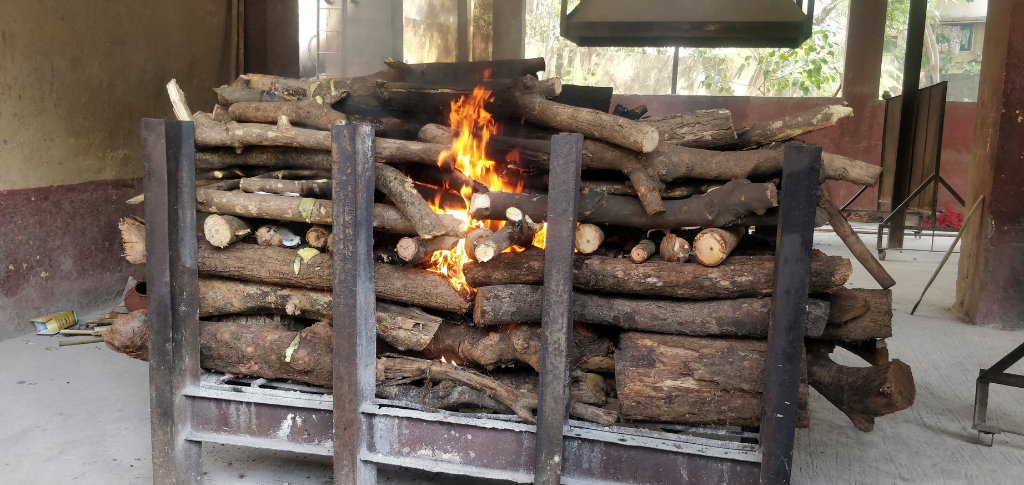Understanding Hindu Cremation Steps and Techniques
Cremation is an integral part of Hindu funeral rites, symbolizing the release of the soul from the physical body and its journey towards the next life. The process is steeped in ancient traditions and rituals that honor the deceased and provide solace to the grieving family. This blog will explore the key steps and techniques involved in Hindu cremation, offering a comprehensive understanding of this sacred practice.
The Hindu Cremation Process
- Preparation of the Body The first step in the Hindu cremation process is preparing the body. The body is bathed and dressed in new, often white, clothes. In some regions, the body is adorned with sandalwood paste and turmeric. A garland of flowers is placed around the neck, and holy basil (tulsi) leaves may be placed in the mouth. The deceased’s big toes are tied together, and the hands are placed in a prayer position.
- Last Rites at Home Before the body is taken to the cremation ground, a priest performs rituals known as “antyeshti,” or last rites, at the deceased’s home. The priest chants sacred mantras, and family members offer prayers and perform rituals to ensure the peaceful departure of the soul. A few grains of rice and a coin may be placed in the mouth of the deceased to symbolize the provision for the journey ahead.
- Procession to the Cremation Ground The body is then placed on a bamboo stretcher and covered with a white cloth. The stretcher is carried by male family members in a procession to the cremation ground. This procession is an important part of the ritual, symbolizing the journey of the soul. The eldest son or a close male relative often leads the procession, carrying a clay pot filled with fire from the home.
- Setting the Pyre At the cremation ground, a funeral pyre is prepared using wood, typically sandalwood or other fragrant woods. The pyre is arranged in a specific manner to ensure complete combustion. The body is placed on the pyre with the head facing south, as per Hindu tradition. Additional wood and ghee (clarified butter) are added to the pyre to aid in the burning process.
- Lighting the Pyre The eldest son or the chief mourner circles the pyre three times, sprinkling water and offering prayers. He then lights the pyre, starting at the mouth of the deceased, symbolizing the release of the soul through the breath. The fire is considered sacred and is believed to purify the soul, aiding in its journey to the next realm.
- The Cremation The body is allowed to burn completely, a process that usually takes several hours. During this time, the family stays nearby, reciting prayers and hymns. The heat of the fire is believed to release the soul from the body and guide it towards liberation (moksha).
- Post-Cremation Rituals Once the body is fully cremated, the remains (ash and bone fragments) are collected by the family. This is typically done the following day. The ashes are then immersed in a sacred river, such as the Ganges, symbolizing the return of the body to the five elements (earth, water, fire, air, and ether).
- Mourning and Memorial Services The mourning period in Hindu tradition varies, but it generally lasts for 13 days. During this time, the family refrains from participating in social events and focuses on prayers and rituals to aid the soul’s journey. On the 13th day, a final ceremony called “Shraddha” is performed, where the family offers food to Brahmin priests and the departed soul.
Techniques in Hindu Cremation
- Traditional Pyre Cremation: This involves building a pyre with wood and other combustible materials. It is the most common method, especially in rural areas.
- Electric Cremation: Modern crematoriums often offer electric cremation, which is quicker and more environmentally friendly. The body is placed in an electric furnace, which incinerates the body using high heat.
- Compressed Natural Gas (CNG) Cremation: Some urban crematoriums use CNG as an alternative to traditional wood, reducing environmental impact and providing a more efficient cremation process.
Conclusion
Hindu cremation is a profound ritual that honors the deceased and supports the soul’s transition to the next life. The process is rich in symbolism and tradition, reflecting the deep spiritual beliefs of Hinduism. Understanding these steps and techniques provides insight into the sacred journey of the soul and the customs that offer comfort and closure to the grieving family. By following these time-honored practices, Hindus pay their final respects and ensure the spiritual well-being of their loved ones.



